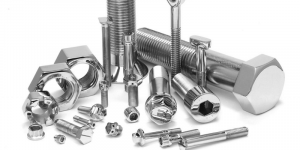In today's industrial environment, the choice of materials is vital for ensuring the performance and durability of different components. When dealing with high-stress applications, selecting the right alloy becomes essential. This article compares two popular materials: Inconel 625 and stainless steel, examining their composition, properties, applications, and factors to consider when making an informed decision.
Composition and Properties of Inconel 625
The Inconel 625 alloy, composed primarily of nickel, chromium, and molybdenum, is known for its outstanding toughness at high temperatures and excellent corrosion resistance. Typically, it contains around 60% nickel, 20% chromium, and smaller amounts of molybdenum, iron, niobium, and other elements. The combination of these elements gives Inconel 625 exceptional resistance to corrosion from alkalis, acids, and saltwater.Composition and Properties of Stainless Steel
In terms of corrosion resistance, Inconel 625 surpasses stainless steel. Its nickel-chromium composition provides superior protection against corrosion caused by acids, saltwater, and oxidizing agents. While stainless steel is corrosion-resistant in many cases, it may be vulnerable to specific corrosive agents under certain conditions. Inconel 625 is incredibly strong and durable, maintaining its mechanical properties even at high temperatures. This makes it ideal for demanding applications such as aerospace components and marine equipment. Stainless steel also exhibits excellent strength but tends to lose its mechanical properties at elevated temperatures. When it comes to temperature resistance, Inconel 625 excels. It can endure high temperatures and rapid thermal cycling without significant degradation, making it perfect for applications involving intense heat and quick cooling cycles. Although stainless steel has high heat resistance, it might face limitations in extremely high-temperature settings. Inconel 625 finds widespread use in industries like aerospace, chemical processing, maritime engineering, and oil & gas. Its corrosion resistance, high strength, and temperature tolerance make it a top choice for critical components exposed to harsh conditions. Stainless steel, on the other hand, is utilized across various industries, including construction, automotive, food processing, and medical equipment. Cost considerations play a significant role in material selection. Given its superior properties and higher nickel content, Inconel 625 is usually more expensive than stainless steel. Project requirements and budget constraints should be carefully evaluated before making a choice. Maintenance and fabrication methods differ between Inconel 625 and stainless steel. While Inconel 625 is robust, it may need specialized welding and machining techniques due to its high strength and unique composition. Stainless steel, conversely, is easier to fabricate and generally requires less specialized maintenance. When choosing between Inconel 625 and stainless steel, project-specific needs must be taken into account. Factors such as corrosion resistance, durability, temperature resistance, and cost should be considered. For critical applications involving high-stress corrosion and extreme temperatures, Inconel 625 fasteners are often preferred. For more cost-sensitive projects requiring good corrosion resistance and strength, stainless steel serves as a suitable alternative. In conclusion, Inconel 625 and stainless steel are both valuable materials with distinct properties and applications. Inconel 625 is particularly useful in severe conditions because of its resilience, longevity, and ability to resist corrosion even at high temperatures. Stainless steel, on the other hand, is versatile, cost-effective, and resistant to corrosion. By understanding their unique characteristics and considering specific project requirements, engineers and designers can make informed decisions when selecting between these materials. In what sectors are Inconel 625 fasteners used? Inconel 625 fasteners are commonly used in industries such as aerospace, chemical engineering, power generation, and marine engineering. Their high thermal strength and corrosion resistance make them ideal for these fields. What is the cost difference between stainless steel and Inconel 625? Cost considerations should always be part of the decision-making process when choosing between these materials. Is stainless steel suitable for high temperatures? Stainless steel has good heat resistance and can be used at high temperatures, though it may not perform as well as Inconel 625 in extremely hot environments.Recent Post

A2-21H vs A2-50 vs A2-70 vs B8M vs A2-80 vs 8.8
May 2, 2023

A2-70 vs Grade 8.8 April 28, 2023

Inconel 625 vs Stainless Steel June 9, 2023

A4-21H vs a4-70 vs a4-50 vs a4-80 vs 8.8 vs 10.9 vs 12.9 vs 18-8 vs 304 vs 316 vs b8m vs a2-70 vs a2-80
May 2, 2023

Â
12.9 vs a4-80 vs 18-8 vs 10.9 vs a2-70 vs 304 vs 316
 May 2, 2023
These materials continue to evolve and find new applications as industries grow and innovate. Engineers and manufacturers must stay updated on the latest developments in material science to ensure they select the most appropriate materials for their projects.Bar Flowmeter,Compensation Type Vortex Flowmeter,Steam Flow Transducer,Intelligent Vortex Flowmeter
Jiangsu Pinpai Technology Co., Ltd. , https://www.jspingpa.com
